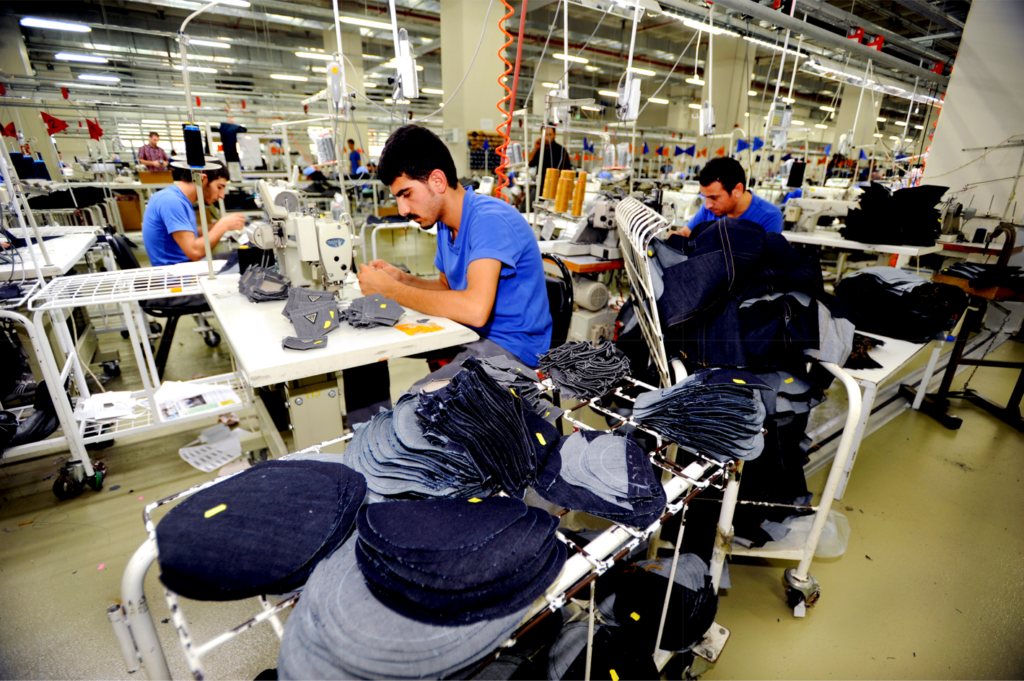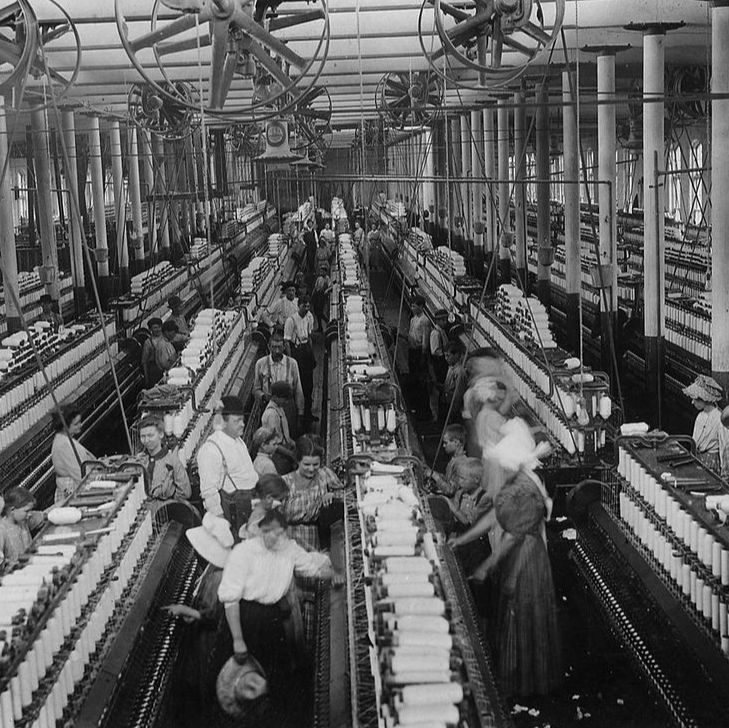Featured Post
England Textile Industri
- Get link
- X
- Other Apps
The European Union. Approximate export of textile and clothing in UK is above 6 billion pounds.
Action On Textile And Garment Industry Industriall
TEXTILE MANUFACTURING IN BRITAIN a Case Study from 1700 to 1850.

England textile industri. The textile business in Britain though successful went through economic cycles. Not surprisingly this trend was further compounded once companies began aggressively outsourcing textile. It was kickstarted by innovations to the British textile industry and led to growth in other industries as well.
Britain continued to dominate the textile industry beyond the industrial revolution and peaked in 1912. At present there are approx 550K people employed under textile and apparel garment sector of UK. At the beginning of 18th century Great Britain is overloaded with recourses and raw materials from the.
Textile Industry of UK holding 6 market share only in fashion sector domestic market value of United Kingdom fashion industry is approximate 66 million pounds. Prices for print cloth plummeted employment dropped and eventually mills began to close. The government of the UK strongly believes that escalating the exports is the key to balance the economic condition of the country.
Textile production in Britain can be said to have its roots as an industry at the beginning of the 18 th century when Thomas Crotchet and George Sorocold established what is thought to be the first factory built in Britain. It all started in 1790 on the banks of Rhode Islands Blackstone River just downstream from the teeming Pawtucket Falls. The textile industry was at the centre of Britains industrial expansion in the Victorian period.
Alas like so many things the outbreak of The Great War in 1914 caused a steep decline. The policies that government and the textile industry itself promote. The 1920s through to the 1940s were a dark time for the New England textile industry.
It was a textile mill with a waterwheel as its source of power the latest machinery and even accommodation for the workers. Before WWI a great many overseas countries depended entirely on Britains exportation of cotton. The wool flax and hemp industries for example had exceptionally early origins and influenced the development of towns and countryside for centuries before the factory.
The industry was the very backbone of the empire. Prior to 1870 industry in the United States was not an integrated whole but a sum of many heterogeneous parts spread across multiple regions. One of the main industries that benefitted from the Industrial Revolution was the textile industry.
The textile industry was founded by the work and importance of the following businessmen inventors and inventions. The 1840s were so grim that they were known as the Hungry Forties and even after the Civil War ended in 1865 American cotton supplies were uncertain and unemployment remained high. Lancashires historic textile industry holds a particular place in Britains history.
It was a textile mill with a waterwheel as its source of power the latest machinery and even accommodation for the workers. Moses Brownabolitionist entrepreneur and cofounder of Brown Universityhad assembled what hed thought were all the new-fangled water-powered. Textile production in Britain can be said to have its roots as an industry at the beginning of the 18th century when Thomas Crotchet and George Sorocold established what is thought to be the first factory built in Britain.
They set the target of 1trillion by 2020 and utilizing the textile products to get profit from the global textile markets. During the Industrial Revolution cotton processing became a major industry in the British economy. Samuel Slater and Mills.
Samuel Slater has been called both the Father of American Industry and the Founder of the American Industrial Revolution Slater built several successful cotton mills in New England and established. Before the start of the Industrial Revolution which began in the 1700s the production of goods was done on a very small scale. The Industrial Revolution began in England in the late 18th century.
The history of New Englands textile industry is no exception. The New England Textile Industry 182560. The pre-industrialisation in urban rural and domestic areas may be seen from perspectives of textile manufacturers as well as the many spinners weavers and connected occupations in workplaces at home and in factories.
Throughout the 1990s British textile companies lost a lot of business to China as clothing retailers and brands in the United Kingdom turned en masse to the Far. Textiles were the most widespread traditional industry in the South West but the regions textile industries differed considerably from those in other parts of England. Take Britains textile industry.
The textile industry was indeed at the center of Britishs industrial expansion and technological advances meant that cotton wools silks and dyestuffs could be produces at unprecedented rates with results exported around the Empire. Before the Industrial Revolution wool was the primary textile good produced in Great Britain. The rising consumptions and standard of living for the.
The textile industry was based on the development of cloth and clothing. Technological advances meant that cottons wools silks and dyestuffs could be produced at unprecedented rates and the results were exported around the Empire. Many textile workers therefore emigrated.
This advertisement from 1880 shows the range of fabrics that were available for clothing. Its success was a direct result of the Industrial Revolution which resulted in the region blossoming into a leading economic force between the late eighteenth and early twentieth centuries. Attempting to study the economy as a whole is difficult because data is scarce however studying important industries in each region during a period of.

What Is Linen Sustainable Fabrics Sustainable Textiles Linen

The Making Of The Market An Introduction To Political Economy Industrial Revolution Industrial Revolution In England Industrial Revolution In America

Humidification In The Textile Industry Fisair

Revolusi Industri Latar Belakang Jalannya Dan Tujuan Beserta Dampaknya Secara Lengkap Http Www Gurupendidikan Latar Belakang Revolusi Industri Revolusi

Holy Bible English Standard Version Deep Brown Cowhide Leather Study Bible Overstock Com Shoppi Upholstery Fabric Designer Upholstery Fabric Kovi Fabrics

Photo 1943 Rows Of Women Sewing On Machines Garment Factory Ebay In 2021 Fashion History Garment Factory Sewing Factory

Kentish Loom In A Canterbury Museum

Street Etiquette Art Art Design Illustration Art

Pin By Mckenzie Stiles On Creepy Places Abandoned Houses Abandoned Desert Places

Pearly Kings Vest King And Queen Costume Queen Hat Button Crafts

Category Cotton Mills Wikimedia Commons

Twisting Yarn Salts Mill Jpg 650 477 Saltaire Model Town Best Places To Live

Old Textile Mill Now A Museum The Former Textile Workers Volunteering Museum Midtjylland Textilforum In Herning Denmark

Clothing Manufacturers Give Quality Products Clothing Manufacturer Buy Clothes Clothing Factory

Textile Manufacturing In The Industrial Revolution History Crunch History Articles Summaries Biographies Resources And More

Beautiful Indigo On Cotton Shibori Kyoto 2104 By A Japanese Indigo Master Mood Indigo Indigo Shibori Surface Design Techniques

Explorepahistory Com Image Industrial Revolution World Industrial Photography

25 Facts About The Industrial Revolution Featuring Alternate Hist Fourth Industrial Revolution American Industrial Revolution Industrial Revolution In England

Comments
Post a Comment